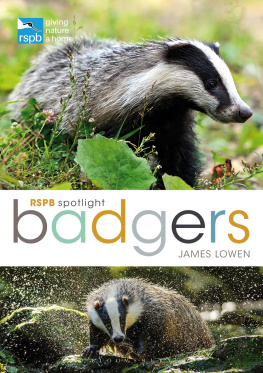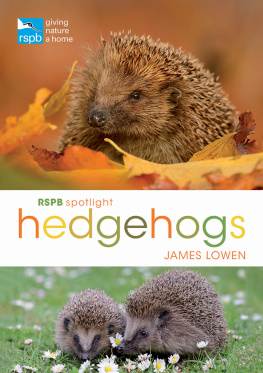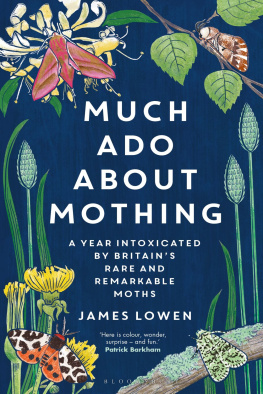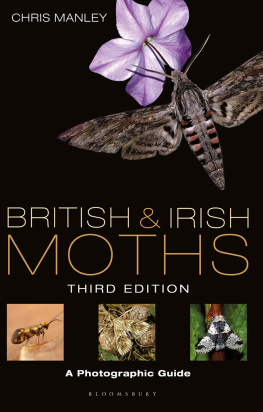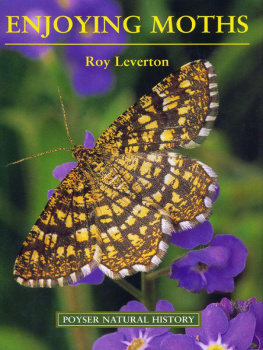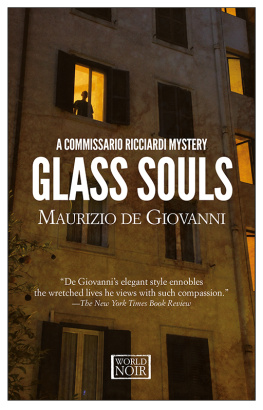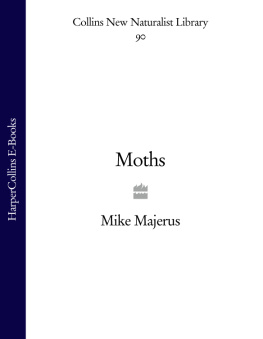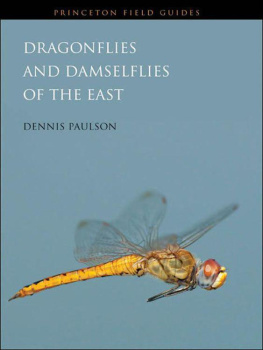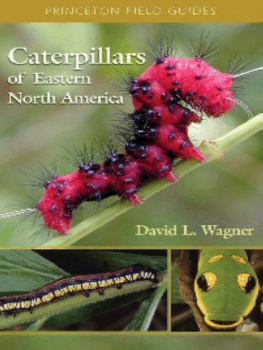
BLOOMSBURY WILDLIFE
Bloomsbury Publishing Plc
50 Bedford Square, London, WC1B 3DP, UK
29 Earlsfort Terrace, Dublin 2, Ireland
This electronic edition published in 2021 by Bloomsbury Publishing Plc
BLOOMSBURY, BLOOMSBURY WILDLIFE and the Diana logo are trademarks of Bloomsbury Publishing Plc
First published in the United Kingdom 2021
Text James Lowen, 2021
Photographs James Lowen, 2021, with the exception of those photographers credited .
James Lowen has asserted his right under the Copyright, Designs and Patents Act, 1988, to be identified as Author of this work.
All rights reserved
You may not copy, distribute, transmit, reproduce or otherwise make available this publication (or any part of it) in any form, or by any means (including without limitation electronic, digital, optical, mechanical, photocopying, printing, recording or otherwise), without the prior written permission of the publisher. Any person who does any unauthorised act in relation to this publication may be liable to criminal prosecution and civil claims for damages.
Bloomsbury Publishing Plc does not have any control over, or responsibility for, any third-party websites referred to in this book. All internet addresses given in this book were correct at the time of going to press. The authors and publisher regret any inconvenience caused if addresses have changed or sites have ceased to exist, but can accept no responsibility for any such changes.
A catalogue record for this book is available from the British Library.
Library of Congress Cataloguing-in-Publication data has been applied for.
ISBN: 978-1-4729-8738-9 (PB)
ISBN: 978-1-4729-8737-2 (eBook)
ISBN: 978-1-4729-9043-3 (ePDF)
To find out more about our authors and their books please visit www.bloomsbury.com where you will find extracts, author interviews and details of forthcoming events, and to be the first to hear about latest releases and special offers, sign up for our newsletters.
CONTENTS

Lime Hawk-moth is particularly associated with urban areas.
One summer, my eyes were opened to the joy of moths thanks to a glorious Poplar Hawk-moth shown to me by a friend. He had caught the moth that morning in his garden and brought it round to show me. A couple of springs later I invested in a moth trap, and have never looked back. A burgeoning fascination with these insect underdogs long seemingly confined to the shadow of the sun-loving butterflies has prompted wide, extensive travels. But above all, it has opened my eyes to the diversity of moths residing in and around my modest suburban garden.
As I write this, it is only six years since that inaugural Summer of Moth a period so short that I can still keenly feel the difficulties I faced in identifying the moths that first graced our trap. Granted, magnificent field guides were available. But they contained a daunting number of similar-looking species described in befuddling terminology. I struggled with these books as best I could, complementing their advice with internet searches and emails to friends. During those first few confusing summers, how I yearned for a field guide that made moths easy one that focused on a manageable number of the common, widespread moths I was most likely to catch, and left aside the rarer or more localised species to avoid exacerbating confusion.
This book aims to be that field guide the one I wish Id had as an incipient moth-er. As its title suggests, this book hopefully serves as a gateway both to moths and to the other, comprehensive, detailed and excellent field guides about them.
James Hunter first revealed the wonder of moths to me. Subsequently, I have learnt about these creatures from a large number of people, many within a local WhatsApp group, but none more so than my friend Will Soar, to whom I am eternally indebted. My knowledge would have been nothing without books written or illustrated by Sean Clancy, Richard Lewington, Chris Manley, Mark Parsons, Zo Randle and colleagues, Phil Sterling, Martin Townsend and Paul Waring whose publications are listed lists those whose images are used. Many of my own images here stem from moths trapped in our Norfolk garden: for the freedom to do so, I thank my wife Sharon and daughter Maya. Finally, I thank Jim Martin and Jenny Campbell at Bloomsbury Wildlife for making this book happen; D & N Publishing for their work on the design; David Hawkins and Susi Bailey for their work on the text; and Angie Hipkin for compiling the index.

University of East Anglia students checking the contents of a campus moth trap.
This field guide serves as a way into enjoying moths. It is designed to help beginners get to grips with a manageable number of common and widespread moths, particularly those that visit gardens. This is a first moth guide that should greatly enhance your inaugural couple of years of moth-trapping and serves as a handy quick reference guide thereafter. That said, there are also plenty of tips and insights for those who have been mothing for a few years. Once you become familiar with the species covered in the book, you should be able to move seamlessly on to more advanced field guides that collectively cover many more species in greater detail.
This introduction explains why moths should be celebrated, suggests ways in which you can enjoy moths and shows how to use this book to identify moths.
As thousands of people have discovered in recent years, moths provide wonderful, rewarding wildlife watching and in so many ways.
Above all, moths make accessing nature easy, because moths live everywhere and because most of them come to you. Run an inexpensive, harmless moth trap essentially a light sitting above a box filled with egg-boxes overnight in your garden or on your balcony, then saunter outside the following morning to check what moths are resting inside, awaiting inspection. Sometimes their number can take your breath away: traps often contain hundreds of insects. These creatures often live what would be a clandestine existence in and around your garden were it not for their powerful attraction to artificial light.

Moths such as these Elephant Hawk-moths are perfect for engaging children with nature.

The spectacular Emperor Moth is a spring garden highlight.
While it is undeniable that quite a few types of moth are essentially small, brown and nondescript, many more species are large, brightly coloured, attractively patterned and/or remarkably shaped classier even than their universally loved brethren, the butterflies. The life history of numerous species conveys fascinating ecological stories from camouflage to climate change, and from their service as pollinators to their arms races with plants and bats.
MOTHS VS BUTTERFLIES


